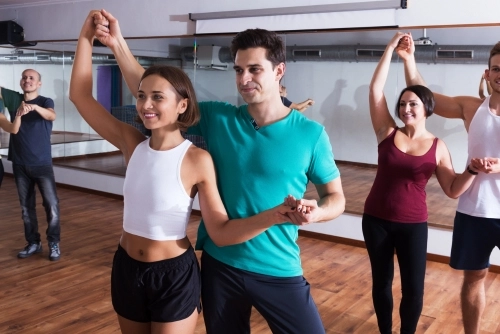Dance San Francisco Fundamentals Explained
Wiki Article
Dance San Francisco Fundamentals Explained
Table of ContentsThe Single Strategy To Use For Dance San FranciscoHow Dance San Francisco can Save You Time, Stress, and Money.All About Dance San FranciscoWhat Does Dance San Francisco Mean?
Let's consider Salsa dancing and music as a fantastic huge Tree that appears like this: Salsa is danced worldwide while numerous technical elements of the dancing are the exact same across styles (6 steps over 8 beats danced on a quick-quick-slow or slow-quick-quick rhythm), there are a number of "trademark" features of the main styles of Salsa that distinguish one from the other.Couples taking part in a Casino Rueda dance all relocate unison as called by a Leader. Distinct functions of Cuban style salsa are circular turn patterns (with "break back" steps on counts 1 and 5) as well as body language influenced by conventional Afro-Cuban folkloric dancings. Distinct attributes of Cali style salsa is fast and detailed maneuvering, danced with a solid hand hold link in between companions.
The origins of the style are a subject of argument, however it is stated that New York design Salsa dance came from the 1960's due to the influx of Latin American emigrants after the Cuban Transformation (salsa dancing sf). Eddie Torres is one of the most well understood New york city design professional dancer, being practically widely attributed with popularizing the style to dance centres outside of New york city
The standard rhythm of "On-2" is slow-quick-quick. The "youngest" of the styles of Salsa, L.A (https://spibimyd8ax.typeform.com/to/UwcuCyx9). Style (some individuals have actually called it "West Shore" style) came to be popular in the 1990's and has its origins in ballroom (Mambo, Swing and Cha, Cha, Cha). Transform patterns lead and adhere to methods are greatly affected by these styles, with the Cross Body Lead being the foundation of the style
Indicators on Dance San Francisco You Should Know
Style are execution of turn patterns and figures in the "slot", with the break actions on matters "1" and "5". This design is additionally characterized by expensive and typically complex arm designing by the follow to accent the "1" and "5" matters. The fundamental rhythm of "On-1" is quick-quick-slow. While Salsa music has solid origins in Cuban, Colombian and Puerto-Rican folkoric customs, it can not be marked down that all Afro-Latin and Latin American societies have added to modern Salsa music as we understand it today.

There she became good friends with the Nuyorican artists, and her cooperations with them and her time with the Fania All-Stars brought about over 50 albums (of collaborative and solo job). Thanks to the web and simplicity of accessibility to details, the popularity of Salsa songs, dance and society has spread like wildfire over the last thirty years and also after that modern Salsa musicians continue to pay homage to the Starting Daddies and Mom of Salsa.

Not known Details About Dance San Francisco
identifying qualities of Salsa songs are: 4/4 measure signature, Kid Clave and Tumbao rhythms, Montuno Piano Unless you have a background in songs, the above 3 attributes possibly indicate nothing to you. An easier way to describe Salsa songs is exactly how it does NOT seem like other kinds of Latin American music.
It's time for lessons. With a lot of studios out there and different designs to pick from, where does a total rookie begin? Many new professional dancers choose to find out L.A. "On-1" style slotted Salsa styles are one of the most widespread in The United States and Canada (with some exemptions of some metropolitan centres that still predominantly welcome Cuban and Puerto Rican styles) and L.A.
.A. Design will swiftly show you the fundamentals of Salsa timing, weight transfer and turn pattern execution. Many dancers, once they've had a year or 2 of dancing L.A. Style Salsa under their belts, "switch" to New York style in order to expand find their dance vocabulary; yet many professional dancers choose to stick to just one style of Salsa and appreciate their time on the dancing floor in that certain design. salsa dancing sf.
Design and New York Design all being danced in the exact same club, with much of the professional dancers having the ability to switch from one style to the other from one song to the following. salsa dancing sf. Regardless of which design you select it is essential to stick to that style up until you're really comfy with the fundamentals of timing, body rhythm and foundation move implementation before taking into consideration "switching" designs (if you intend to)
As soon as you embark on lessons prepare to commit energy and time to learning exactly how to dance in general it takes a complete newbie (i. e., a person with little or no dancing experience) about 6 months of proactively taking lessons and heading out and practicing at the very least twice a week to get to a factor where pattern execution starts to really feel "all-natural".
Report this wiki page